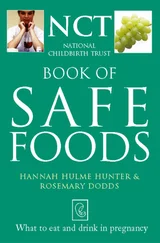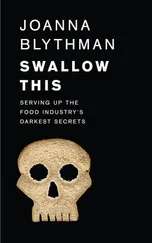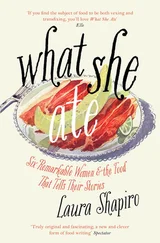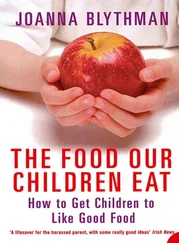The aubergines on sale in Britain and Ireland tend to be much of a muchness. The dark purple, pear-drop-shaped aubergine of uniform size and dimensions rules the roost. Middle Eastern and Asian shops often sell more varied types, with different shapes, sizes and skin tones from white through violet to purple-black. These can have subtly different flavours, being more and less bitter, and a smoother texture when cooked. Whatever sort of aubergine you go for, choose fresh ones. These should look smooth-skinned and firm and feel heavy for their size.
Things to do with aubergine
• Using a ridged, cast-iron grill pan or under a grill, char whole aubergines until the skin is stiff and papery and the interior is completely soft. Skin, then finely chop or liquidize the flesh with light tahini (sesame) paste, garlic and a little olive oil to make a dish in the style of the Lebanese moutabal, or pan-Middle Eastern baba ganoush.
• In Sicilian caponata, aubergines provide an almost meaty bulk in a sour-sweet partnership with celery, tomatoes, capers and vinegar.
• Aubergines love lamb, and flatter it immensely, in a Greek moussaka perhaps, or by adding melting texture that thickens a curry.
• Aubergines hit it off well with Thai flavours, basking happily in a hot, fragrant coconut broth.
• For lighter, more unusual lamb meatballs, use half-and-half cooked, chopped aubergine and meat.
• Tomatoes and garlic are best friends with aubergines. Cook them together in olive oil over a very low heat for hours in a shallow frying pan without a lid until they collapse into a delicious sludge. A stick of cinnamon will nudge the dish in a Middle Eastern direction. Season with salt and pepper and serve warm as a vegetable accompaniment or at room temperature as a starter, with bread or crudités, or sprinkled with parsley and salty white cheese.
Are aubergines good for me?
Even though they don’t have the showy colours that we take as markers flagging up the healthiest vegetables, aubergines have much to commend them. They provide a lot of soluble fibre, which slows down the rate at which sugar is released into the bloodstream, are a good source of B vitamins, which aid brain and nervous system function, and folate, which helps prevent birth defects. Aubergines are particularly rich in useful minerals, especially potassium, manganese, copper and magnesium. Research into the aubergine suggests that it contains very beneficial phytochemicals, such as phenols and terpenes and sterols, which may help protect the body against cancer, microbial infections and viruses, and promote heart health.
How are aubergines grown?
Most of the aubergines we buy are grown either in the UK or Holland in glasshouses in the same way as peppers (see PEPPERs/How are peppers grown?).
Are aubergines a green choice?
Glasshouse production of aubergines raises the same issues as for tomatoes (see TOMATOES/Are tomatoes a green choice?).
Where and when should I buy aubergines?
Standard glasshouse aubergines are available all year round. Most come from Holland, some from Spain, and UK-grown ones are on sale from March until November. For more varied types of aubergine, check out Asian stores and supermarkets and Middle Eastern grocers. Italian food shops sometimes import outdoor-grown aubergines from Italy.
Will aubergines break the bank?
Aubergines aren’t an expensive purchase and can provide cheap bulk in many dishes. Their meaty fleshiness makes them a good, inexpensive vegetarian substitute for meat in lots of recipes. The hidden cost with any aubergine dish is the oil required to cook it.
Aubergines keep well when refrigerated. Older aubergines may begin to sag in their skins and have golden-brown patches that indicate that they are rotting. When you cut into them, their internal pips will look darker and more obvious. If you end up with aubergines like this, there is no need to chuck them out. Just cut off the bad bits and then use as normal.
Broccoli, cabbage, cauliflower and other brassicas
(Brussels sprouts, kale, cavolo nero, bok choy and pak choy, romanesco, kohlrabi, radishes, Chinese leaves, spring greens)
For decades, brassicas were greeted with indifference, or worse, and seen as the least sexy, most unappealing of all our vegetables. Now, in a welcome reversal of status, they have been rediscovered as some of the most chic, interesting and useful vegetables we have to hand. The whiff of overcooked, school dinner cabbage and waterlogged hotel cauliflower no longer hangs over the land. Inspired by foreign cuisines and a new guard of progressive chefs more focused on home-grown vegetables, we have learned new ways with brassicas, be they eaten raw, al dente or cooked to melting softness.
Vegetables in this family don’t show their age as much as lettuce, but with the exception of hard white and red cabbage, which store beautifully, they deteriorate surprisingly quickly, both in appearance and taste. So don’t see brassicas as something to keep in the fridge for future use; eat them as soon as you buy them. UK- or Ireland-grown brassicas will naturally be fresher than the imported (usually Spanish) equivalent.
In cabbage and Brussels sprouts look for good, firm hearts and perky, tight outer leaves. For cauliflower and its pale green relative, romanesco, a compact, hard head is a must. Avoid any that are bendy or yielding. Brassicas such as radishes and kohlrabi should feel hard to the touch. When buying leafy brassicas such as bok or pak choy, or cavolo nero (black cabbage), look for leaves that stand up to attention and are vibrantly green. Don’t buy any that are floppy or dull-looking. You can tell whether purple sprouting broccoli is fresh by testing it with your nail: it should sink into the stalk, which should not be woody or fibrous. You can also use the nail test for the more common chunky, dark green type of broccoli (calabrese). If your nail doesn’t sink in, but the florets are tight and firm, don’t discard it, simply pare off the hard exterior of the stalk with a knife until you come to a softer centre. Cut out the fibrous stalks from kale and use just the frilly green leaves.
When cooking brassicas, timing is critical. Cooking should be either short and sweet, or long and slow, as in cabbage soup, or braised red cabbage. Nothing in between will do. Over-boiled brassicas release sulphurous odours and turn to unappetizing mush. The best way to capture the fresh flavour of brassicas is to use as little water as possible. Either stir-fry, sauté or steam them, or use the half-boil/half-steam ‘conservative’ method. This involves putting the vegetables in a wide, shallow pot with only a little boiling water, so that they are not covered, and then cooking them briefly and furiously with the lid on.
Things to do with brassicas
• Peppery brassicas such as radishes and kohlrabi make excellent salads when shredded, or crudités when cut into batons. Along with hard types of cabbage, commonly eaten raw in coleslaw, they offer that attractive crunch.
• Nutty-tasting brassicas such as cauliflower and romanesco work in raw salads too, as long as they are broken down into tiny florets and generously anointed with a punchy dressing.
• Raw, shredded or torn, tender new inner leaves of cavolo nero and de-ribbed kale add vigour to a green salad.
• Cauliflower is good roasted. Blanch florets in boiling water for two minutes, slice thickly and roast with oil, ground or cracked coriander seed and sea salt.
• Kale and Chinese broccoli (kailan), in common with crisp, juicy pak and bok choy and other Chinese greens, are great steamed for a couple of minutes then finished off with soy sauce and a drop of sesame oil.
• Sauté stems of calabrese broccoli in a mixture of butter and oil, flavoured with chilli flakes and chopped anchovies in a lidded pan until soft, adding the florets two minutes before the end of cooking. You can do the same with purple-sprouting or tenderstem broccoli, but cook both stem and florets simultaneously.
Читать дальше












